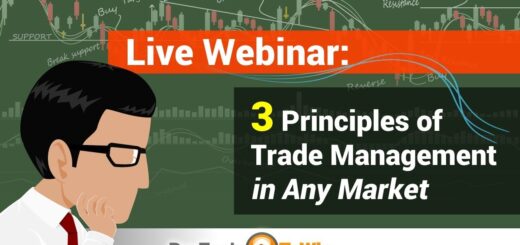The Secret Behind Trading the Market Open
A common consesus among day traders is that forex is not worthwhile. Respected, experience traders often trade futures markets. These futures markets can be traded almost 24 hours per day, but there are certainly better times to trade than others. Common sense may tell you it’s best to trade when there is some activity; not when the market is flatlining. When is there consistent volatility? Soon after the market opens and several hours thereafter. When does the market open? This may differ among futures markets. We now live in a world of electronic trading. Gone are the days when the opening of a trading pit determined the open of the session. Though those pit open times may still be observed; there is a better way to determine when the market behaves like it is the open.
To do this, your charting platform should have an Average True Range (ATR) indicator. Configure that indicator with a period value of four. And then apply it to the chart. Set the chart to five minutes. Scroll back through multiple days and observe when the market opened. Note the time. Did the ATR suddenly climb, day after day around 9:30 a.m. ET? Were you looking at the E-mini S&P 500? Congratulations, your steady observation has shown to you the 9:30 a.m. market open time for the E-mini S&P 500.
Once you know when the market opens, you can apply a number of trading methods from DayTradeToWin. The signals of at least one such method are reviewed, here. The ABC Method, for example, focuses on three periods of the day: A, B, and C. The first period begins at the 9:30 a.m. market open. Does that mean you should be trading exactly at 9:30 a.m.? No. The spike that occurs may take 20+ min. to stabilize into activity worth trading. And sometimes, the ATR value can be too great on a 5-minute chart. By letting the ATR value “prove itself” over time, one can make an assessment and navigate accordingly as of 9:50 a.m. ET or so.




